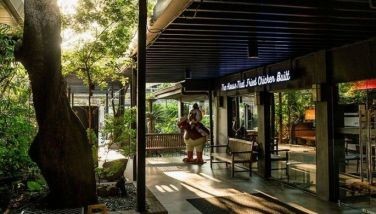Speedy quieting process

January 16, 2003 | 12:00am
An action for forcible entry is filed by a party who must allege and prove prior physical possession but is deprived thereof by another through force, intimidation, threat, strategy or stealth. Possession by the latter is therefore unlawful from the start. It is a quieting process for those whose possession has been disturbed, and thus summary in nature. But it must be filed before the Municipal Trial Court in Cities (MTCC) within one year from the date of actual entry into the land, or, if entry is made through stealth, from the time of discovery of the entry. In determining the date of the taking of possession or actual forcible entry into the land, can the court take judicial notice of evidence presented in other proceedings? If it turns out that the action is filed after one year, can a motion to dismiss be filed before the MTCC despite the summary nature of the proceedings. What is the remedy of the owner if no action is filed within one year from the time of forcible entry by another? These are the array of questions answered in this case of Caridad and the spouses Mendoza.
The spouses Mendoza were the owners of two lots (lot 10-A covered by TCT No.RT-16200, and Lot 1 covered by TCT No.RT-15993). On July 10, 1992, the spouses filed a complaint for forcible entry before the MTCC against Caridad alleging that in February of the same year 1992, the latter unlawfully entered lot 10-A and erected thereon a house of light materials. In their complaint, the spouses alleged that Caridad’s house was located "along the road and right in front of the Regional National Museum and not far behind the City Hall". This house and its location was also the subject of a criminal case(4659) previously filed by the spouses on October 2, 1991 for violation of P.D.772 or the anti-squatting law, and another criminal case subsequently filed on July, 15,1993 for violation of PD 1096 or the National Building Code.
Caridad failed to answer on time because her motion for extension to file answer was denied since it was not allowed in a summary proceeding. Nevertheless, Caridad filed a motion to dismiss the complaint for forcible entry on the ground that the MTCC had no jurisdiction because it was filed only in 1992 or beyond the one year period provided in the Rules of Civil Procedure (Rule 70). Caridad averred that in Criminal Case No.4659 for anti-squatting, the husband himself, Sergio Mendoza, alleged in his sworn statement that she (Caridad) had illegally entered the land in the first week of January 1987.On the other hand, the spouses contended that the subject of the anti-squatting case (lot 1) is different from the parcel of land involved in the forcible entry case (lot 10-A).
The MTCC denied Caridad’s motion to dismiss because it is a prohibited pleading in a summary proceeding. Instead, it rendered a decision ordering Caridad to vacate the land in question and to pay rentals, attorney’s fees and costs of suit.
The Regional Trial Court to which the case was appealed by Caridad affirmed the ruling of the MTCC and ordered the execution of the latter’s decision. While RTC granted Caridad’s motion for reconsideration only in so far as to determine the location of the houses involved in this case so that it will know whether they are located in the same lot or a lot different from that involved in the criminal case for anti-squatting, no relocation survey was actually submitted by Caridad within the deadline fixed. So the RTC ordered the return of the case to the MTCC for execution.
Caridad thus elevated the case to the Court of Appeals (CA). But the CA upheld the decisions of the lower courts. It ruled that the lot in this case was different from that involved in the anti-squatting case and that the MTCC had jurisdiction and did not err in rejecting Caridad’s motion to dismiss. The CA reasoned that MTCC had passed upon the issue of ownership of the property merely to determine possession-an action that did not oust the latter of its jurisdiction.
Was the CA correct?
No.
As a general rule, factual findings of trial courts, especially when affirmed by the Court of Appeals, are not to be disturbed and should be upheld as binding on the Supreme Court. However, when, among others, the findings of facts are premised on the absence of evidence, or are contradicted by the evidence on record, such findings may be disregarded. Ordinarily, courts also do not take judicial notice of the evidence presented in other proceedings even if these have been tried or are pending in the same court or before the same judge. But in some intances, courts have also taken judicial notice of proceedings in other cases that are closely connected to the matter in controversy. Appellate courts also cannot as a rule refer to the record in another case to ascertain a fact not shown in the record of the case before it, yet in some instance, it may consult decisions in other proceedings in order to look for the law that is determinative of or applicable to the case under review. These cases may be so closely interwoven or so clearly interdependent as to justify the application of the rule on judicial notice. Like the three cases filed against Caridad: Criminal Case 4659 for violation of the anti-squatting law filed on Oct. 2,1991 in which Caridad was already acquitted on April 30,1996 on the ground of good faith; this civil case (5681) for forcible entry filed on July 10, 1992 subject of this review; and Criminal case 5734 for violation of the building code filed on July 15, 1993 wherein Caridad was again acquitted on November 26. 1997.
The decision in the two criminal cases for violation of the anti-squatting law (Crim. Case 4659) and for violation of the building code (Crim. Case no.5734) cannot be ignored. The property involved in these two cases and in the instant case for forcible entry is one and the same – Caridad’s house.According to the decision in Crim. Case 4659, Caridad’s house is actually located on lot 1 covered by TCT No. RT-15993. It was also admitted by Segundo Mendoza in said criminal case that he had knowledge of Caridad’s house since January 1987. In Crim. Case No. 5734 on the other hand, the decision of the RTC shows that Caridad’s house had actually been in existence prior to February,1992, the alleged date of illegal entry. In fact in said decision, it has been established that the house in question was not built by Caridad but by her father sometime in 1935; Caridad merely lived in the house as a member of the family until the death of her parents, whereupon she continued to reside in said house and now claims to be its owner.
On the basis of the foregoing facts, it is clear that the cause of action for forcible entry filed by the spouses Mendoza had already prescribed when they filed the complaint for ejectment on July 10,1992. There is cogent basis therefore for Caridad’s contention that the MTCC lacked jurisdiction in this case. Even if the spouses Mendoza may be the owner of the land, possession thereof cannot be wrested through the summary action for ejectment of Caridad who had been occupying it for more than one year. The spouses should have presented their suit before the RTC directly in an accion publiciana, which is the plenary action to recover the right of possession; or an accion reivindicatoria which is an action to recover ownership as well as possession.
A motion to dismiss on the ground of lack of jurisdiction can also be filed in the summary proceeding as an exception to the rule on prohibited pleadings pursuant to the 1991 Revised Rules of Summary Procedure which is already applicable to this case. Even if the answer of Caridad had been belatedly filed, the MTCC can take cognizance of said motion to dismiss because a party may assail the jurisdiction of the court at any stage of the proceedings and even on appeal. (Bongato vs. Spouses Malvar G.R. 141614 August 14, 2002).
E-mail: josesison@edsamail.com.ph
The spouses Mendoza were the owners of two lots (lot 10-A covered by TCT No.RT-16200, and Lot 1 covered by TCT No.RT-15993). On July 10, 1992, the spouses filed a complaint for forcible entry before the MTCC against Caridad alleging that in February of the same year 1992, the latter unlawfully entered lot 10-A and erected thereon a house of light materials. In their complaint, the spouses alleged that Caridad’s house was located "along the road and right in front of the Regional National Museum and not far behind the City Hall". This house and its location was also the subject of a criminal case(4659) previously filed by the spouses on October 2, 1991 for violation of P.D.772 or the anti-squatting law, and another criminal case subsequently filed on July, 15,1993 for violation of PD 1096 or the National Building Code.
Caridad failed to answer on time because her motion for extension to file answer was denied since it was not allowed in a summary proceeding. Nevertheless, Caridad filed a motion to dismiss the complaint for forcible entry on the ground that the MTCC had no jurisdiction because it was filed only in 1992 or beyond the one year period provided in the Rules of Civil Procedure (Rule 70). Caridad averred that in Criminal Case No.4659 for anti-squatting, the husband himself, Sergio Mendoza, alleged in his sworn statement that she (Caridad) had illegally entered the land in the first week of January 1987.On the other hand, the spouses contended that the subject of the anti-squatting case (lot 1) is different from the parcel of land involved in the forcible entry case (lot 10-A).
The MTCC denied Caridad’s motion to dismiss because it is a prohibited pleading in a summary proceeding. Instead, it rendered a decision ordering Caridad to vacate the land in question and to pay rentals, attorney’s fees and costs of suit.
The Regional Trial Court to which the case was appealed by Caridad affirmed the ruling of the MTCC and ordered the execution of the latter’s decision. While RTC granted Caridad’s motion for reconsideration only in so far as to determine the location of the houses involved in this case so that it will know whether they are located in the same lot or a lot different from that involved in the criminal case for anti-squatting, no relocation survey was actually submitted by Caridad within the deadline fixed. So the RTC ordered the return of the case to the MTCC for execution.
Caridad thus elevated the case to the Court of Appeals (CA). But the CA upheld the decisions of the lower courts. It ruled that the lot in this case was different from that involved in the anti-squatting case and that the MTCC had jurisdiction and did not err in rejecting Caridad’s motion to dismiss. The CA reasoned that MTCC had passed upon the issue of ownership of the property merely to determine possession-an action that did not oust the latter of its jurisdiction.
Was the CA correct?
No.
As a general rule, factual findings of trial courts, especially when affirmed by the Court of Appeals, are not to be disturbed and should be upheld as binding on the Supreme Court. However, when, among others, the findings of facts are premised on the absence of evidence, or are contradicted by the evidence on record, such findings may be disregarded. Ordinarily, courts also do not take judicial notice of the evidence presented in other proceedings even if these have been tried or are pending in the same court or before the same judge. But in some intances, courts have also taken judicial notice of proceedings in other cases that are closely connected to the matter in controversy. Appellate courts also cannot as a rule refer to the record in another case to ascertain a fact not shown in the record of the case before it, yet in some instance, it may consult decisions in other proceedings in order to look for the law that is determinative of or applicable to the case under review. These cases may be so closely interwoven or so clearly interdependent as to justify the application of the rule on judicial notice. Like the three cases filed against Caridad: Criminal Case 4659 for violation of the anti-squatting law filed on Oct. 2,1991 in which Caridad was already acquitted on April 30,1996 on the ground of good faith; this civil case (5681) for forcible entry filed on July 10, 1992 subject of this review; and Criminal case 5734 for violation of the building code filed on July 15, 1993 wherein Caridad was again acquitted on November 26. 1997.
The decision in the two criminal cases for violation of the anti-squatting law (Crim. Case 4659) and for violation of the building code (Crim. Case no.5734) cannot be ignored. The property involved in these two cases and in the instant case for forcible entry is one and the same – Caridad’s house.According to the decision in Crim. Case 4659, Caridad’s house is actually located on lot 1 covered by TCT No. RT-15993. It was also admitted by Segundo Mendoza in said criminal case that he had knowledge of Caridad’s house since January 1987. In Crim. Case No. 5734 on the other hand, the decision of the RTC shows that Caridad’s house had actually been in existence prior to February,1992, the alleged date of illegal entry. In fact in said decision, it has been established that the house in question was not built by Caridad but by her father sometime in 1935; Caridad merely lived in the house as a member of the family until the death of her parents, whereupon she continued to reside in said house and now claims to be its owner.
On the basis of the foregoing facts, it is clear that the cause of action for forcible entry filed by the spouses Mendoza had already prescribed when they filed the complaint for ejectment on July 10,1992. There is cogent basis therefore for Caridad’s contention that the MTCC lacked jurisdiction in this case. Even if the spouses Mendoza may be the owner of the land, possession thereof cannot be wrested through the summary action for ejectment of Caridad who had been occupying it for more than one year. The spouses should have presented their suit before the RTC directly in an accion publiciana, which is the plenary action to recover the right of possession; or an accion reivindicatoria which is an action to recover ownership as well as possession.
A motion to dismiss on the ground of lack of jurisdiction can also be filed in the summary proceeding as an exception to the rule on prohibited pleadings pursuant to the 1991 Revised Rules of Summary Procedure which is already applicable to this case. Even if the answer of Caridad had been belatedly filed, the MTCC can take cognizance of said motion to dismiss because a party may assail the jurisdiction of the court at any stage of the proceedings and even on appeal. (Bongato vs. Spouses Malvar G.R. 141614 August 14, 2002).
BrandSpace Articles
<
>
- Latest
- Trending
Trending
Latest
Trending

By THE CORNER ORACLE | By Andrew J. Masigan | 1 day ago

By VIRTUAL REALITY | By Tony Lopez | 20 hours ago

By SKETCHES | By Ana Marie Pamintuan | 1 day ago
Latest
Recommended

April 1, 2025 - 11:21am






















